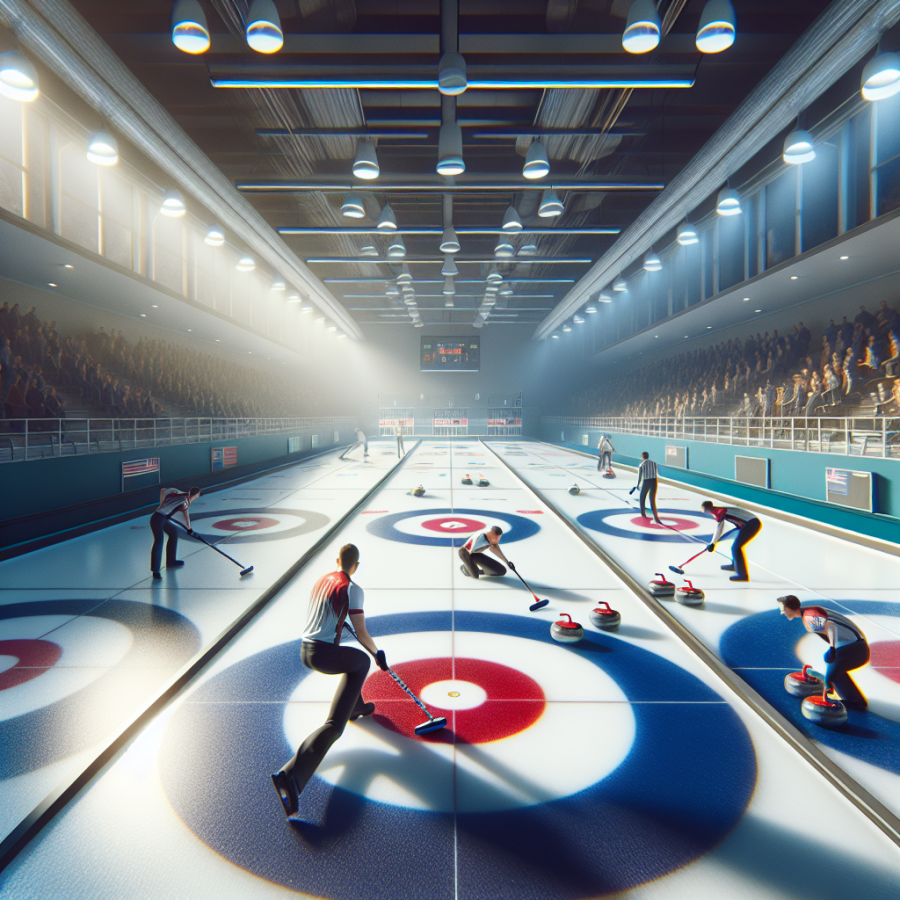Understanding the Basics: Rules, Techniques and Equipment in Curling
Curlig might seem like an overly simplistic sport to those unfamiliar with its intricacies. After all, it mainly involves sliding stones on a sheet of ice. However, upon closer look, you’ll find that it is a highly strategic and technical sport that requires a great deal of skill, precision, and teamwork.
Let's start unraveling this complex game by first getting into its fundamentals: rules, techniques and equipment.
In understanding the rules of curling, one can equate the scoring to a similar concept in darts or archery. The center of the house, known as the button, acts as a bullseye. Each team has eight stones and the objective is to get as many of their stones as possible closer to the center of the house compared to the opponent's stones over the span of an 'end' or round. Scoring occurs after each end, with teams earning one point for each of their stones that are closer to the center than their opponent's closest stone.
The teams alternate turns, with one player from each team having the role of the shooter, who's responsible for sliding the stone down the ice towards the house. Another team member acts as the skip, who gives strategic directions and also sweeps the ice to influence the stone's path and distance. The remaining two members of the team assist in sweeping.
Curling borrows its name from the distinctive technique used, known as 'curling'. It refers to the twist imparted to the stone at the start of the shot, causing it to curve, or 'curl,' as it travels down the ice. This ability to manipulate the trajectory of the stone is crucial in being able to execute strategic plays.
The equipment used in curling can also play a huge role in the game. The curling stone, for example, is a polished granite stone that weighs up to 44 pounds and has a handle on the top for gripping. The bottom of the stone is slightly concave to reduce friction with the ice.
Players wear special curling shoes, with one having a smooth, teflon-coated sole for sliding on the ice (known as the slider) while the other has a rougher, grip sole. Additionally, they use curling brooms to sweep the ice, which can control the speed and direction of the stone. The act of sweeping warms the ice and reduces friction, allowing the stone to travel further and in a straighter line.
Read also:
Exploring the Intricacies of Sports Psychology: Boosting Performance on the Field
Advanced Strategies: Evaluating the Complex Decision-Making and Precision in Curling
Curling, often dubbed as “chess on ice,” is a compelling game requiring profound precision, strategy, and teamwork. The critical elements that combine in curling, such as assessing the ice, planning the shots, and positioning the stones accurately, intensify the complexity of the game and create a captivating spectacle that goes beyond mere power play.
Foremost among the advanced strategies in curling is the evaluation and mastery of the ice. Experienced curlers understand that not all ice is the same. Factors such as temperature, humidity, and the pebbling process can dramatically influence the path and speed of the stone. Understanding these nuances can often turn the tides in a match. Hence, before a game, players keenly observe the ice conditions during their practice time, running stones down different paths to determine how they react. This "mapping" process is crucial in devising the game strategy and making informed decisions throughout the match.
Strategic shot selection is another advanced facet of curling. Much like in chess, where every move influences the contest's trajectory, each delivery in curling has an immediate and lasting effect on the game situation. The decision on which shot to play can vary significantly based on the scoreboard, the number of stones in play, and the specific end of the game. The various forms of delivery include guards to protect scoring stones, draws to gain points, takeouts to remove opponent stones, and raises to change the position of the stones. Choosing the ideal shot in a given situation is a complex task requiring thorough understanding, instinct, and experience.
The precision curling demands is arguably one of the sport’s most challenging aspects. Unlike other sports, where there might be space for slight error, in curling, a minor mistake can have substantial repercussions. For instance, over- or under-curling by even a fraction of an inch can completely alter the game's outcome. The weight (speed) of the stone and its release are key determinants of precision. Curlers continually work on their delivery technique and sweeping synchronization to maintain optimal weight and line.
The power of sweeping should not be undervalued either. Sweeping not only affects the stone’s speed but can also subtly change its direction. The art of strategic sweeping is a critical skill top-level teams must master. The skip must communicate with the sweepers, who in turn must have excellent judgment of weight and a good understanding of the ice conditions.




